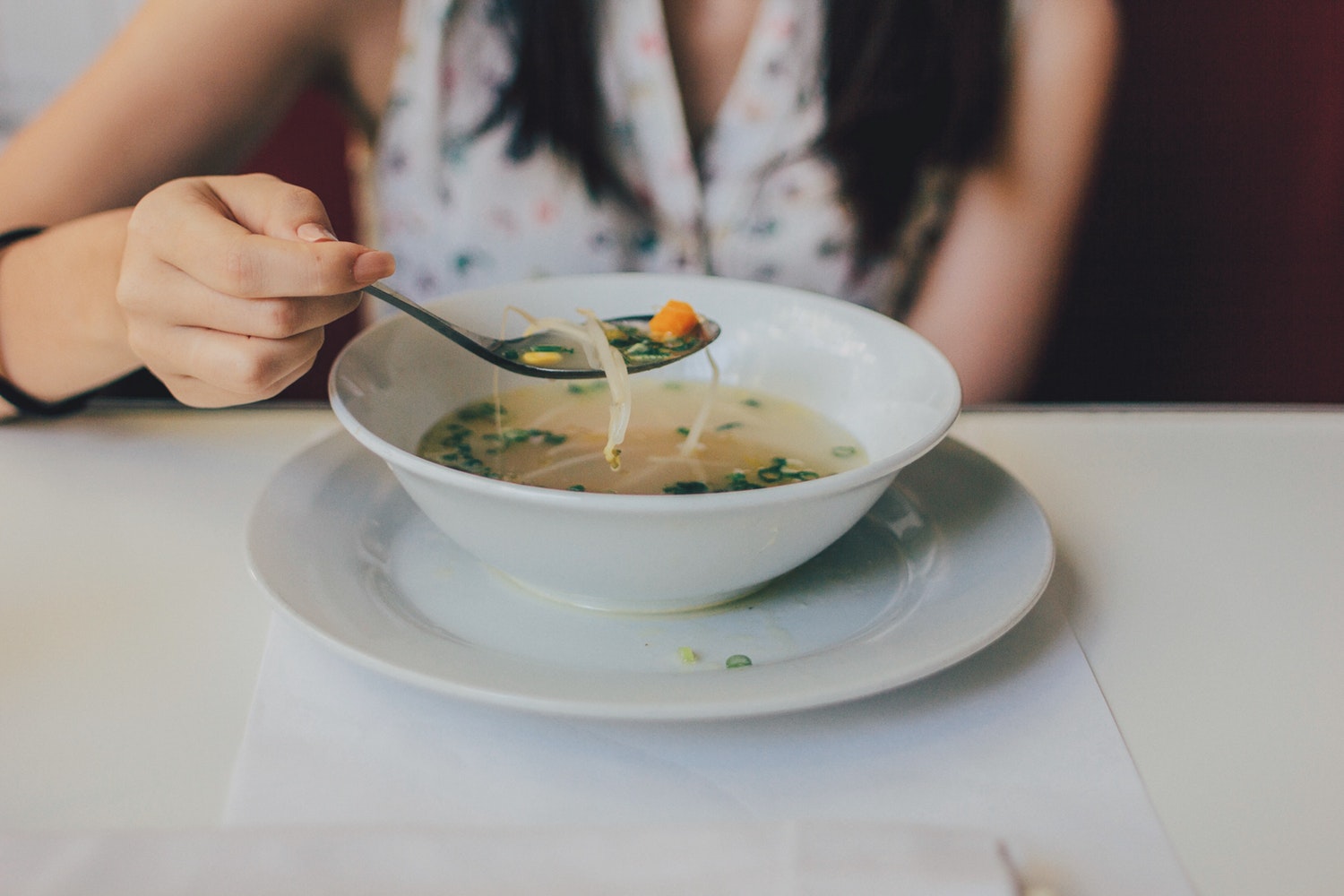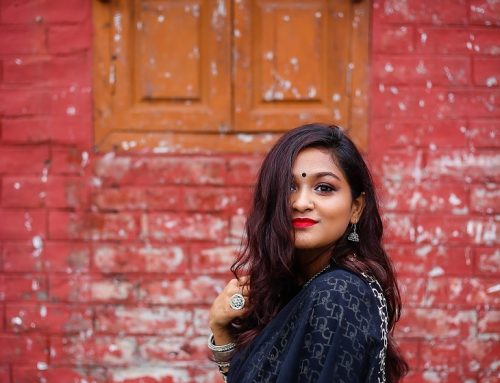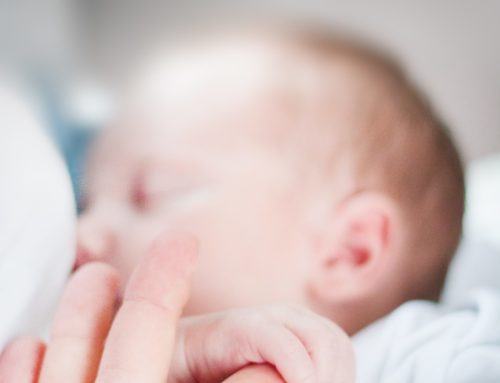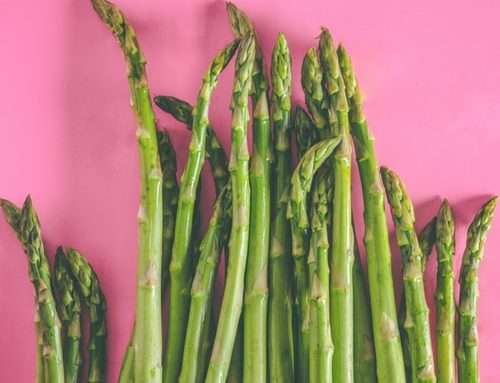Pregnancy and childbirth are a beautiful phase of a mother’s life, isn’t it? But this journey also takes a toll on our body. And breastfeeding a baby demands additional calories! From medical professionals to caregivers, everyone encourages having a nutritious postnatal diet. A healthy, lactation boosting food intake after delivery (along with regular exercise and sleep) is crucial for a mother to recover from the physiological changes undergone from conception to childbirth, as well as empower her (both physically and emotionally) for lactation and childcare.
What is a good postnatal diet
My mother explained to me, how a balanced and nutritious postnatal diet is crucial for recovery as well as lactation (if you plan to breastfeed). Primarily, a postnatal diet should:
- Help body’s recovery post pregnancy and childbirth
- Support lactation
- Provide adequate calcium for lactation & to replenish its loss during pregnancy
- Provide sufficient iron to avoid anaemia and recover from blood loss
- Should be easy on digestive system
- Include plenty of fluids
- Energise mother for childcare responsibilities
Now my mom (like many Indian moms) is a treasure trove of very effective traditional Indian “nuskhas” for nourishment as well as everyday ailments. When she arrived at my place a month before my EDD (she helped me with baby care for three months post delivery), she had meal plans ready: for remaining weeks of pregnancy, as well as postnatal diet :-).
She explained the broad guidelines of a typical Indian diet after delivery:
Help body’s recovery post pregnancy and childbirth:
A postnatal diet should supply essential nutrients through a balanced diet to help the body recover from pregnancy and childbirth, regain strength (primarily the spine), and support hormones to settle back.
Support lactation:
A postnatal diet should include lactation boosting food to improve/help supply (if required). Also, in general, the diet should provide energy to sustain lactation (especially since I hoped to EBF Anu for first six months and continue feeding her till 2 years).
Provide adequate calcium for lactation & to replenish its loss during pregnancy:
Pregnancy most likely causes calcium loss from the body (in spite of calcium-rich diet and supplements during pregnancy), and lactation means additional calcium requirement. So food rich in calcium is essential to replenish the loss and support lactation.
Provide sufficient iron to avoid anaemia and recover from blood loss:
Iron-rich diet is crucial to prevent anaemia and recover from the blood loss during and after childbirth. Low iron levels can also affect milk supply [1].
Should be easy on digestive system:
Any meal should be easy to digest, aids the recovery of gastrointestinal system post delivery and avoids possible digestion issues like acidity/bloating etc. caused by erratic sleep schedule after a newborn arrives.
Include plenty of fluids:
Breastfeeding requires additional fluid intake [2]. It is important to consume sufficient water and fluids based on thirst cues to avoid dehydration [3].
Energise mother for childcare responsibilities:
Child care can be taxing (both physically and emotionally). It can involve sleepless nights, non-existent sleep/eat schedules due to feeding, burping, cleaning diapers etc.. A balanced, appetizing diet, along with exercise and rest, go a long way in helping a mother cope with baby care.
‘Traditional’ Indian diet after delivery
I had full faith in mother’s suggested traditional Indian diet post delivery ( even though she is very liberal with using ghee 😉 ). She proposed inclusion/increase of following food items in the regular (pre-pregnancy) diet:
- For Lactation: Methi seeds, garlic, various daals, edible gum, dry fruits, vegetables like seasonal green leafy veggies, Lauki, Dodka (Turai), etc.
- Calcium-rich food: Milk, curd, paneer, sesame seeds, seasonal green vegetables etc.
- Iron-rich food: Ragi, aliv (Garden cress seeds), dates/raisins, seasonal green leafy vegetables, saunf (fennel seeds) etc..
- Reduce/prevent flatulence or bloating: ajwain (carom), jeera, saunf, dill seeds etc..
- Other recommended food items: Shatavari, fluids (ample water, fresh fruit juices with pulp), flaxseed
I also got a postnatal diet plan in my birthing and yoga class: diet and supplementation for first 40 days after delivery, based on traditional Indian recommendations. I compared my mom’s meal plan to the one given in my birthing class. Not surprisingly, both were very similar.
Additionally, diet plan for first 40 days after delivery recommended the following:
- Ample consumption of Ajwain water
- Healthy snacks (milk, fruits, Methi/Panjiri laddoo etc.) between major meals
- Soup before lunch and dinner
- Ayurvedic supplements: Dashmularishta (for recuperation) & Shatavari (for lactation)
- Oats/daliya porridge (I did not follow this one)
The best part was that both these suggested diet plans were not a major deviation from my regular (pre-pregnancy) meals.
Note: These traditional postnatal meal plans are suitable irrespective of whether you deliver the baby ‘normally’ (vaginal delivery) or via c-section. You can read more about the nutritional benefits of these traditionally recommended postnatal food items here.
Doctor’s advice for postnatal diet
My GYN’s advice on post delivery diet: “Eat everything in moderation :-)! Have a balanced, healthy diet. Avoid junk food. Have plenty of fluids. Listen to your body’s hunger and thirst cues. And yes you can have 1-2 spoons of ghee daily”. Succinct and assuring :-).
My postnatal diet plan
I followed mostly a traditional Indian for postnatal diet :-). Also, I ate as per my appetite.
So I ate typical Marathi meals, just like my usual/pre-pregnancy meals, tweaked a bit for the postnatal requirement. The meals did not involve anything that I disliked and were in tandem with what my GYN recommended. There was no specific food item restricted/omitted from my diet. The postpartum diet I followed did have few additions/changes from my usual diet:
- Snacks like Methi, Goond and Aliv laddoos
- Kheer/Halwa made of ragi/sooji/wheat flour etc.
- Use of sprouted methi seeds, garlic while cooking vegetables
- Rice for lunch/dinner (if required)
- Sesame, flaxseed chutneys
- Mouth freshener – Made with roasted carom, sesame seeds, dill seeds, saunf etc.
- Ajwain water (click here for recipe)
- Low use of spices (for first 6-8 weeks)
Click here to read about yummy and easy to make snacks for breastfeeding mother.
Diet during 1-3 months after delivery
Postnatal food during first 40 days after delivery is considered critical for:
- Improving milk supply and sustained lactation
- Mother’s recuperation
These are the so-called traditional ‘confinement days’. Most postnatal diet plans are chalked out for these first 40 days (including the one I got from birthing class).
My milk supply was established around 3 months after Anu’s birth. So I continued the “fully loaded” dietary recommendations till three months.
Postnatal meal plan in hospital
Hospital food is usually looked down. So after delivery, I was a little anxious about eating hospital food (since no outside food was allowed), especially since first 72 hours post delivery are more about latching and breastfeeding. But kudos to Hiranandani Hospital for serving delicious and healthy meals. A nutritionist designed the meal plan (in consultation with the GYN I think) and my dietary preferences.
Following was my meal plan for postnatal diet in hospital:
| Time | Meal Type | Meal |
|---|---|---|
| 6:00 am | Pre-Breakfast |
|
| 7:30-8:00 am | Breakfast |
|
| 10:30-11:00 am | Pre-Lunch |
|
| 12:00-12:30 pm | Lunch |
|
| 4:00 pm | Afternoon Hot Beverage |
|
| 5:00 pm | Evening Snack |
|
| 7:00 pm | Pre-Dinner |
|
| 8:00 pm | Dinner |
|
| 10:30 pm | Post-Dinner |
|
Postnatal meal plan at home
Each meal was freshly prepared (we are that household which prefers to eat all freshly cooked meals). The oil used was as usual, and spices were on the slightly lower side, at least for first 40 days. Dry chutney and Laddoos my mom would make to last for 7 and 15 days respectively. Following is my meal plan for postnatal diet (while breastfeeding):
| Time | Meal Type | Meal |
|---|---|---|
| 7:30 am | Pre-Breakfast |
|
| 8:30-9:00 am | Breakfast |
|
| 11:00 am | Pre-Lunch |
|
| 12:30-1:30 pm | Lunch |
|
| 4:00 pm | Afternoon Beverage |
|
| 6:00 pm | Evening Snack**** |
|
| 7:30 pm | Pre-Dinner |
|
| 8:00-8:30 pm | Dinner |
|
| 10:30 pm | Post-Dinner |
|
| Late night | Late night snack |
|
Subji* – Any seasonal vegetable preparation (Gourd, beans, lady finger, cabbage, seasonal green leafy veggies etc.). Also added sprouted Meethi seeds and garlic to most of the subji preparation.
Laddoo** – To avoid excess use of ghee, Aai would sometimes just make the mixture of laddoo and not shape them as laddoos (which requires more ghee for binding). So I would have the laddoo mixture instead of actual laddoo :-).
Daal*** – Daal cooked from different legumes: yellow moong, green moong, tur, masoor, black gram, black-eyed peas, chickpeas, etc..
Evening Snack**** – Ragi was regularly added while preparing the snack.
Note: Also, I do not eat sea fish during monsoon season (when fishing is suspended). I followed this (self-imposed) restriction even during postnatal diet.
Mid-meal or late night snacks
In between major meals (especially immediately after feeding) or even after my usual snack time if I felt hungry, I would have one of the laddoos or dry fruits.
Fluids in postnatal diet
I used to sip 0.5-1 glass of Ajwain water in between meals. I would have 6-8 glasses of Ajwain water daily.
Also, I regularly had veg/chicken soup before dinner.
And of course plenty of water. I did not put a number on the amount of water to drink daily. Instead, I would drink when I felt thirsty (and I did feel thirsty frequently during exclusive breastfeeding). Also, while taking care of the baby, I would sometimes forget (or delay) drinking water. So I started drinking water before and after each feeding session (also recommended in the prenatal class). I would end up drinking around 2-3 litres of plain water daily.
Postnatal supplements
I had my GYN prescribed supplements, that is Calcium (as long as breastfeeding) and Iron (first six months when exclusively breastfeeding). I also had Shatavari daily [click here to read about Shatavari helps to boost lactation]. Also, on the recommendation of my teacher at prenatal and birthing class I had Dashmularistha daily. Dashmularistha is an Ayurvedic medicine especially recommended postpartum for recuperation.
My mom also made a mouth freshener (for post-meal consumption) of roasted sesame seeds, carom, fennel seeds and cumin [see the simple recipe of mukhwas].
Eating guilt-free
I enjoyed my post-delivery meals, especially in the first three months. I would look forward to each meal (especially mom’s special Kheer or Halwa) firstly because mom cooked them or they were prepared under her guidance. Secondly, when breastfeeding, you tend to become so hungry after each feeding session that each meal becomes a meal to relish. I would devour each meal, as if I had a license to eat:-P. Thirdly, after dealing with vomiting through most of my 2nd trimester during pregnancy, it was a delight to eat without any dietary restrictions (not that I had many).
Note: Breastfeeding makes you hungry. Lactation demands more calories. To remain stress-free, it is best to not worry about weight gain and eat as per appetite.
Diet during 4-6 months after delivery
Around the end of three months post delivery, my milk supply was established, and Anu was gaining weight at a good pace. She was exclusively breastfed until six months. I continued eating as per my appetite (which remained high, a tad less than my appetite in 1-3 months post delivery).
Meal plan
I broadly followed the same meal plan of 1-3 months, barring few items from daily consumption, e.g., consumed kheer occasionally (2-3 times a week, in a smaller quantity). Also, I almost stopped having ghee rich Halwa and preferred to eat fruit instead of juice with pulp (I do not favour fruit juices over raw fruit, I am surprised I had them in first three months). Slightly reduced the frequency of adding sprouted methi seeds and garlic in every vegetable preparation.
I started eating out occasionally.
Mid-meal or late night snacks
Since it was winter, I continued having laddoos and dry fruits when I was hungry in between meals or late at night (which are anyways traditionally consumed during winters).
Fluids
I reduced Ajwain water intake (had it only if I felt bloated/gassy). Also, soup before dinner became occasional (2-3 times a week). I continued to drink plenty of water based on my thirst cues.
Postnatal supplements
Continued calcium and iron supplements as prescribed by GYN. I stopped having Dashmularishta but continued with Shatavari.
Diet during 7-9 months after delivery
Anu started her solids after six months, but her transition to solids was slow (one new meal a month). Anu dropped one feed a month during this period. My hunger level came down only marginally (though I was exercising regularly). I continued to eat as per my appetite.
Meal plan
I broadly continued the same meal plan as 4-6 months. Stopped having sprouted methi seeds and garlic in every vegetable preparation.
Mid-meal or late night snacks
Craving/hunger-pang for late night as well as mid-meal snacks had reduced, so I had just one laddoo in a day or on alternate days (I am a laddoo loving person you see :-)). Also, daily intake of dry fruits reduced (to my pre-pregnancy day consumption).
Fluids
Stopped taking Ajwain water. Soup before dinner was consumed once or twice a week (same as my pre-pregnancy day frequency). I continued to drink plenty of water based on my thirst cues.
Postnatal supplements
I continued taking the calcium supplement as prescribed. Stopped iron supplements. Also continued Shatavari supplement until Anu was nine months old.
Diet from 9 months-end of breastfeeding
Anu has three solid meals a day (and 1-2 snacks) post 9 months of age, and her breastfeeds reduced over time. My hunger levels came down gradually. I continued to eat as per my appetite.
Meal plan
I gradually came back to my pre-pregnancy diet by the time Anu was around 15 months old.
Mid-meal or late night snacks
I stopped having laddoos after 9 months (the methi, goond, aliv ones). From 9-14 months, Anu’s night feeds were mostly comfort feeds (1-2 times in a night). There was no more hunger cue for late night snacking.
Fluids
I continue to drink sufficient water based on my thirst cues.
Postnatal supplements
Anu is still taking 1-2 feeds daily (no more night time feeding). I continue to take the calcium supplement as prescribed.
Postnatal diet and Weight loss
I lost most of my pregnancy weight (except 2 Kg) within 2 weeks of delivery. I followed a traditional Indian diet (enriched with ghee) and barely gained a total of 1 Kg till I exclusively breastfed Anupama for first 6 months (I did 40-60 minutes of brisk walk outdoors regularly after 40 days of confinement). Though I must confess, my abdomen started looking flabby 2-3 months post delivery. With regular exercise, I am now observing inch loss around my waist (working on few more inches to lose :-P).
Benefits of a healthy postnatal diet
Thanks to the nourishing and healthy postnatal diet, I did not experience any pain or body ache typically experienced post childbirth (I did have a lower backache for 1-2 weeks, but it was due to my slouching posture). My recovery post delivery was smooth (in spite of being sleep deprived).
Fortunately, my milk supply was sufficient and (and I think due to a well balanced, lactation boosting postnatal diet) I was able to exclusively breastfeed Anu for 6 months (click here to read about Anu and my EBF journey). I fed her on demand till she was almost 15 months old (when I weaned her off night feeds … click here for details about our night time weaning). She still takes 1-2 feeds a day and I hope to continue breastfeeding her till she is 2 years old.
Also, I barely had any hair fall post delivery (true story). And I think a balanced, nutritious postnatal diet is the most probable reason for it :-).






Leave A Comment